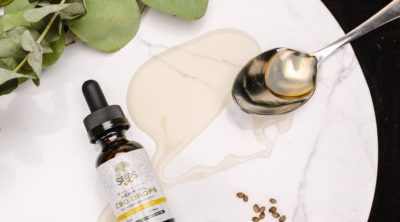
Moxibustion is a traditional therapy rooted in ancient eastern medicine. This form of therapy is several centuries old and believed to date back to the same time as acupuncture. The aim of this traditional therapy is to trigger defensive responses at specific acupuncture points in the body and boost the immune system to fight chronic illnesses.
The name of this ancient treatment is derived from the main herb used to administer moxibustion. The mugwort plant (scientific name: Artemisia vulgaris) provides the “moxa” which is a fine wool made out of its dried leaves when ground and sieved. These are rolled into sticks and cones used for burning during the treatment. This form of healing is believed to have been first practiced in the extremely cold regions of Mongolia in China. However, countries like Japan, Korea and Vietnam have also found similar uses of moxa for several centuries.
Moxibustion Techniques
There are several techniques used in administering this ancient therapy, however, the basis for all remain the same, that is to stimulate blood circulation and trigger the natural healing responses of the body. We know from science that the human body has its own defense mechanism which springs into action when faced with triggers such as wound resulting in blood loss, infection from a virus, etc.
In case of chronic ailments, due to lack of treatment or because the body gets used to the illness over time, these responses are diminished or delayed. This is where treatments like acupuncture and moxibustion find application. All the techniques listed below are used in moxibustion treatment to target certain strategic points on the human body and apply heat to evoke an immune biochemical response.
Direct Moxibustion
Used traditionally by the Japanese, this technique involves lighting the moxa cone with an incense stick directly on the skin of the patient, at a specific acupuncture point. The therapist removes the burning herb cone before it hits the skin completely. The idea is to channel warmth into the specific point, just enough to lend heat but not enough to burn the skin terribly. It often causes superficial redness of the exposed skin. This form of treatment is not commonly practiced outside Japan for fear of undesirable skin blisters and scarring. More commonly, some form of topical therapeutic paste is applied on the area of the skin before placing the moxa cone, to minimize chances of direct contact.
Indirect Moxibustion
Believed to have originated in China, this technique is more common than direct moxibustion. The therapist lights one end of the moxa pole and holds it slightly above the skin thus avoiding contact with the skin altogether. This technique is often paired with placing acupuncture needles into the points and gradually providing mild heat around the needles to induce a localized gradual dilation of the blood vessels. This technique is known to make the patient feel deeply relaxed.
Needle Moxa Technique
Similar to the indirect moxa technique, this mode of treatment involves placing the burning moxa on top of the needle inserted into the muscle. This technique is slightly tricky and requires an expert practitioner to constantly monitor the moxa, carefully smoldering it to prevent it from overheating the skin. The topical redness of the skin caused by indirect techniques usually fades away in a few minutes.
Common Illnesses Treated Using Moxibustion
In general, moxibustion is often used as a complementary treatment along with acupuncture. Thus, those with chronic conditions and stress disorders are common candidates for moxibustion therapy. Listed below are some common conditions that can be healed using moxibustion.
- Chronic back pain, sports injuries, migraines, chronic fatigue and arthritis
- Anxiety disorders, certain symptoms of depression
- Constipation, other digestive system disorders
- Diseases of the female reproductive system such as menstrual cramps, irregular menstruation, infertility, correction of breech presentation of fetus during late pregnancy
- Male health problems such as impotence, reduced sperm quality
- Relief from side effects of cancer or conventional cancer treatment (not promoted as the sole treatment for cancer but to be used in conjunction with conventional treatment)
Moxibustion Risk Factors
As with any branch of medicine, moxibustion is not safe for everyone. It is important to carefully choose the practitioner and before treatment, be forthcoming about any allergies you may have or any other treatment that you may have undergone. If you have any of the conditions listed below, inform your practitioner about it and most likely you will not be considered fit to undergo moxibustion in the near future.
- Frequently experiencing hot flashes or night sweats
- Having diabetes
- Suffering from respiratory disorders or if you are allergic to smoke (from the incense, moxa, etc.)
- Having undergone any kind of surgery for organ removal or transplant, etc.
Apart from the above risk factors, orally ingesting oils from the moxa or accidental intake of the herb may cause toxic reactions and is known to increase chances of miscarriage in pregnant women. Do not self-administer moxibustion, a common tendency due to the easy availability of moxa poles and the apparent simplicity of its use. In general, if you suffer from a debilitating disease that needs immediate attention, do not subject yourself to any alternative treatment forms, including moxibustion, as the sole form of treatment.
Alternative medicine is extremely useful in case of chronic ailments and is often recommended to be used in conjunction with conventional medical treatment. With proper supervision from an experienced and certified practitioner, moxibustion can bring relief and provide relaxation. Moxibustion therapy benefits far outweigh its undesirable effects that can occur only due to lack of care. Hope you are able to use this ancient medical technique to find lasting cure for your chronic conditions.
Disclaimer: The material provided on this site is for educational purposes only and any recommendations are not intended to replace the advice of your physician. We encourage you to seek advice from a competent health care professional with regard to your symptoms or condition.


